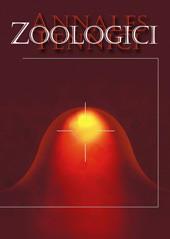We studied the epigenetic variability and epigenetic distance of raccoon dogs from seven European localities and the species' Amursk area of origin. The studies were based on 24 non-metric traits in 1046 skulls. Native raccoon dogs from the Amursk region showed the same low level of epigenetic variability as the European populations, giving no indication of a founder effect or inbreeding. Epigenetic distances between raccoon-dog populations were generally high. The German regions formed a separate cluster with a rather high epigenetic distance to the Finnish-Polish group. This indicates different migration lines of the species. The native raccoon dogs of the Amursk region were completely separate from the European populations as a consequence of the distinct reproductive isolation of about 60 years, as well as an effect of the colonisation and migration history of the species.
BioOne.org will be down briefly for maintenance on 17 December 2024 between 18:00-22:00 Pacific Time US. We apologize for any inconvenience.
How to translate text using browser tools
1 February 2009
Raccoon Dog, Nyctereutes procyonoides, Populations in the Area of Origin and in Colonised Regions — The Epigenetic Variability of an Immigrant
Hermann Ansorge,
Maryana Ranyuk,
Kaarina Kauhala,
Rafał Kowalczyk,
Norman Stier
ACCESS THE FULL ARTICLE

Annales Zoologici Fennici
Vol. 46 • No. 1
February 2009
Vol. 46 • No. 1
February 2009




